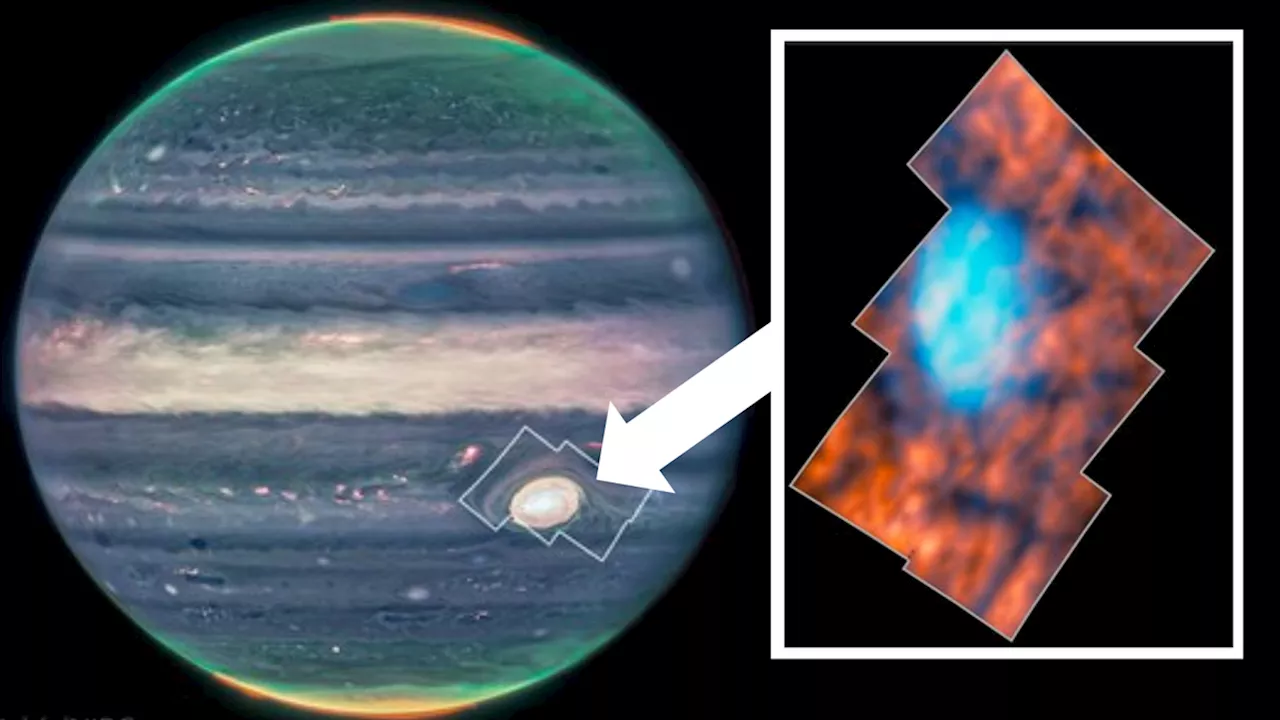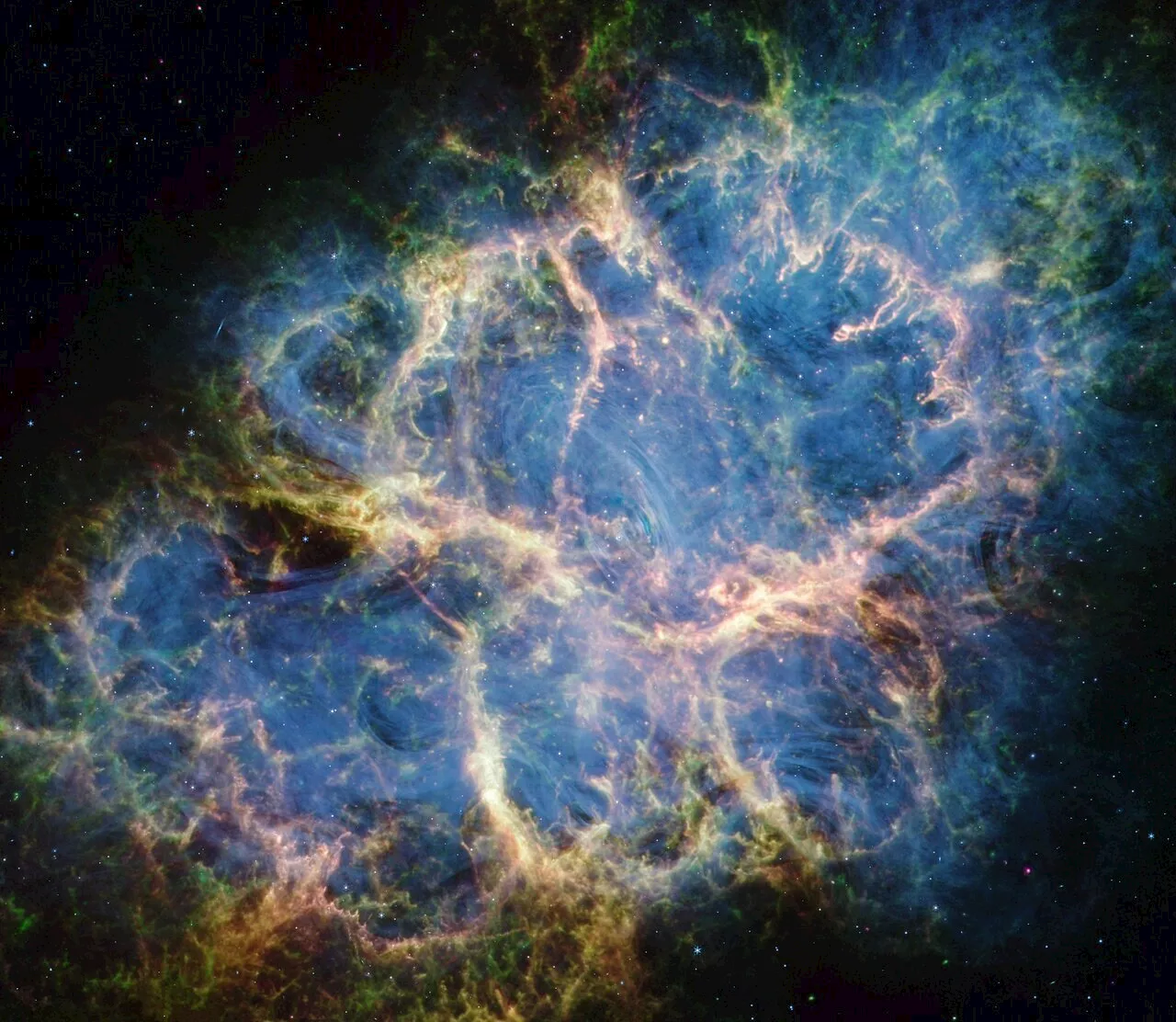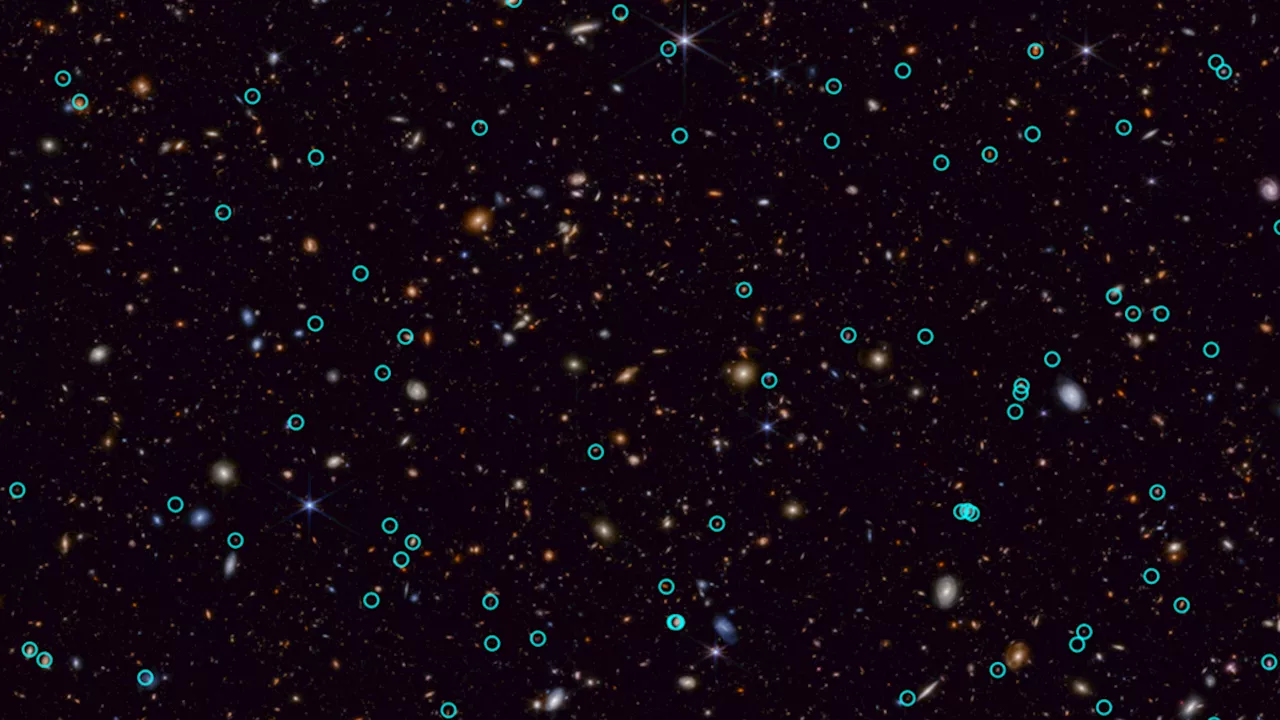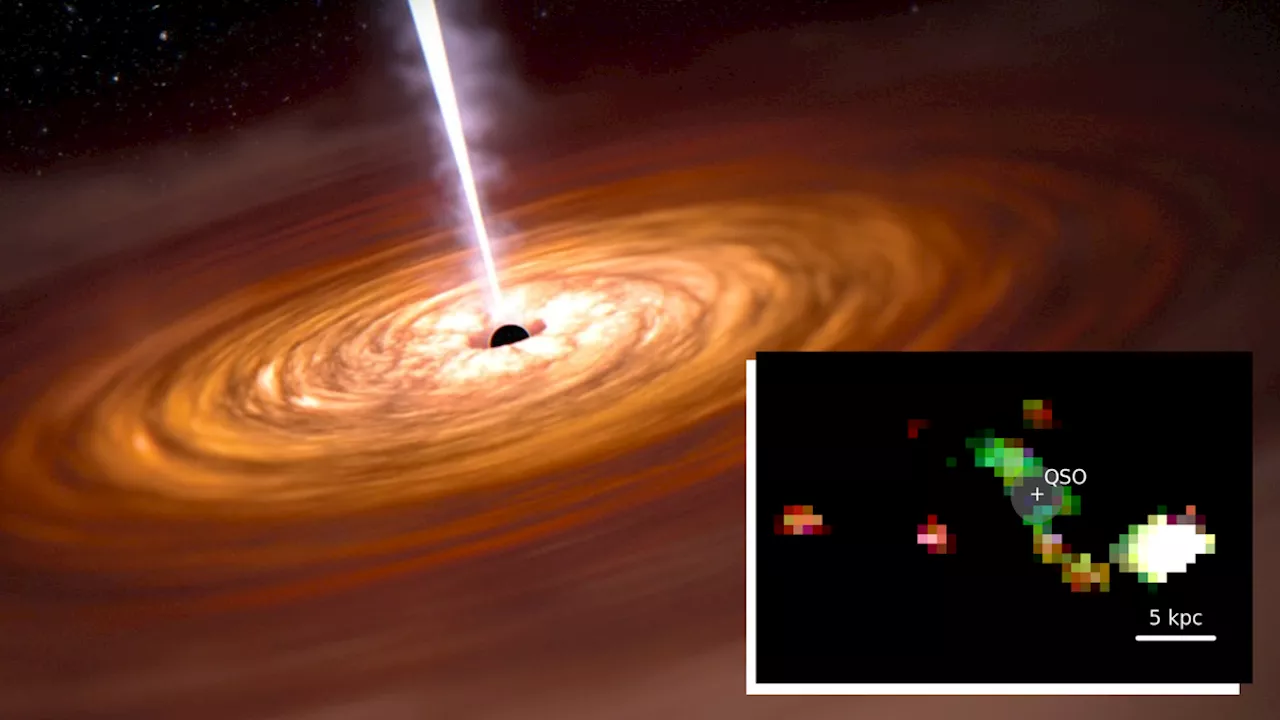Robert Lea is a science journalist in the U.K. whose articles have been published in Physics World, New Scientist, Astronomy Magazine, All About Space, Newsweek and ZME Science. He also writes about science communication for Elsevier and the European Journal of Physics. Rob holds a bachelor of science degree in physics and astronomy from the U.K.
Main image: An illustration of a supermassive-black-hole-powered quasar. Inset: A map of line emissions of hydrogen and oxygen , in the PJ308-21 system, shown after masking the light from the central quasar .Using the James Webb Space Telescope , astronomers have observed the dramatic"dance" between a supermassive black hole and two satellite galaxies. The observations could help scientists better understand how galaxies and supermassive black holes grew in the early universe.
Map of ionizing oxygen emission in the PJ308-21 system, observed with the JWST showing a complex three-dimensional structure of the system and the"cosmic dance" of the satellite galaxies around the quasar.are born when supermassive black holes with masses millions or billions of times that of the sun that sit at the heart of galaxies are surrounded by a wealth of gas and dust.
Photoionization is also happening in the second satellite galaxy, but in that case, it is being caused by a bout of"Thanks to NIRSpec, for the first time, we can study, in the PJ308-21 system, the optical band rich in precious diagnostic data on the properties of the gas near the black hole in the galaxy hosting the quasar and in the surrounding galaxies," said team member and INAF astrophysicist Federica Loiacono.
United States Latest News, United States Headlines
Similar News:You can also read news stories similar to this one that we have collected from other news sources.
 James Webb Space Telescope spots 'Cosmic Gems' in the extremely early universe (video)Robert Lea is a science journalist in the U.K. whose articles have been published in Physics World, New Scientist, Astronomy Magazine, All About Space, Newsweek and ZME Science. He also writes about science communication for Elsevier and the European Journal of Physics. Rob holds a bachelor of science degree in physics and astronomy from the U.K.
James Webb Space Telescope spots 'Cosmic Gems' in the extremely early universe (video)Robert Lea is a science journalist in the U.K. whose articles have been published in Physics World, New Scientist, Astronomy Magazine, All About Space, Newsweek and ZME Science. He also writes about science communication for Elsevier and the European Journal of Physics. Rob holds a bachelor of science degree in physics and astronomy from the U.K.
Read more »
 James Webb Space Telescope spies strange shapes above Jupiter's Great Red Spot (image)Robert Lea is a science journalist in the U.K. whose articles have been published in Physics World, New Scientist, Astronomy Magazine, All About Space, Newsweek and ZME Science. He also writes about science communication for Elsevier and the European Journal of Physics. Rob holds a bachelor of science degree in physics and astronomy from the U.K.
James Webb Space Telescope spies strange shapes above Jupiter's Great Red Spot (image)Robert Lea is a science journalist in the U.K. whose articles have been published in Physics World, New Scientist, Astronomy Magazine, All About Space, Newsweek and ZME Science. He also writes about science communication for Elsevier and the European Journal of Physics. Rob holds a bachelor of science degree in physics and astronomy from the U.K.
Read more »
 James Webb Space Telescope spies never-before-seen star behavior in distant nebula (video, photo)Space.com contributing writer Stefanie Waldek is a self-taught space nerd and aviation geek who is passionate about all things spaceflight and astronomy.
James Webb Space Telescope spies never-before-seen star behavior in distant nebula (video, photo)Space.com contributing writer Stefanie Waldek is a self-taught space nerd and aviation geek who is passionate about all things spaceflight and astronomy.
Read more »
![]() Iconic Crab Nebula shines in gorgeous James Webb Space Telescope views (video, photo)Sharmila Kuthunur is a Seattle-based science journalist covering astronomy, astrophysics and space exploration. Follow her on X skuthunur.
Iconic Crab Nebula shines in gorgeous James Webb Space Telescope views (video, photo)Sharmila Kuthunur is a Seattle-based science journalist covering astronomy, astrophysics and space exploration. Follow her on X skuthunur.
Read more »
 Scientists investigate the origins of the Crab Nebula with James Webb Space TelescopeA team of scientists used the NASA/ESA/CSA James Webb Space Telescope to parse the composition of the Crab Nebula, a supernova remnant located 6,500 light-years away in the constellation Taurus.
Scientists investigate the origins of the Crab Nebula with James Webb Space TelescopeA team of scientists used the NASA/ESA/CSA James Webb Space Telescope to parse the composition of the Crab Nebula, a supernova remnant located 6,500 light-years away in the constellation Taurus.
Read more »
 'Supernova discovery machine' James Webb Space Telescope finds most distant star explosion on recordRobert Lea is a science journalist in the U.K. whose articles have been published in Physics World, New Scientist, Astronomy Magazine, All About Space, Newsweek and ZME Science. He also writes about science communication for Elsevier and the European Journal of Physics. Rob holds a bachelor of science degree in physics and astronomy from the U.K.
'Supernova discovery machine' James Webb Space Telescope finds most distant star explosion on recordRobert Lea is a science journalist in the U.K. whose articles have been published in Physics World, New Scientist, Astronomy Magazine, All About Space, Newsweek and ZME Science. He also writes about science communication for Elsevier and the European Journal of Physics. Rob holds a bachelor of science degree in physics and astronomy from the U.K.
Read more »
